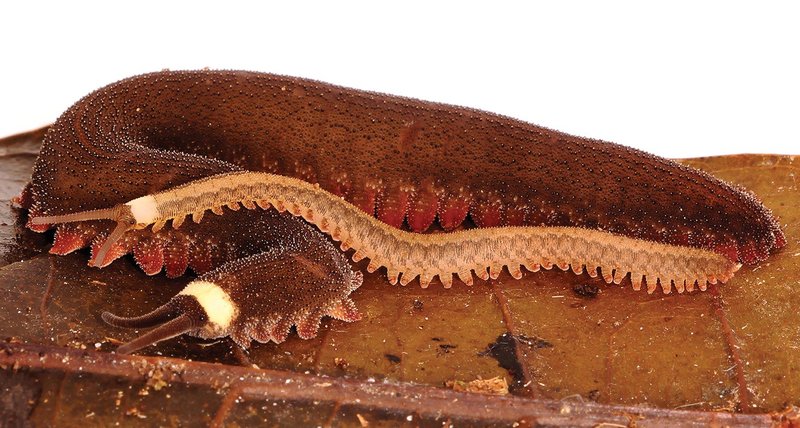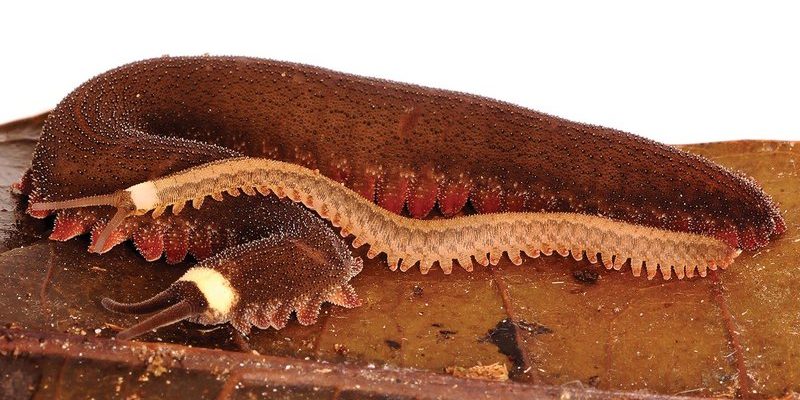
Here’s the thing: exploring the genetics behind velvet worm color morphs is like peeling back the layers of an onion. Each layer reveals something new and exciting about how these creatures adapt and survive in their environments. Just like people, velvet worms don’t all look the same. Their pigmentation can range from earthy browns and greens to vibrant blues and reds, and that’s where genetics come into play. Let’s dive into this colorful world and see what makes these creatures tick!
What Are Velvet Worms?
To really appreciate why velvet worms have different color morphs, it’s essential to know what they are. Velvet worms may look a bit like a cross between a caterpillar and a slug, but they belong to their own unique phylum. They’re soft-bodied, segmented animals that ooze slime—yes, slime! This goo serves a purpose: it helps them capture prey and even keeps them moist in their often humid homes.
These little guys are primarily found in tropical and subtropical regions around the world. Their habitats can range from rainforests to dry forests. Despite their soft bodies, which make them vulnerable to predators, velvet worms have some nifty features. They can shoot a sticky substance to catch dinner and even have the ability to regenerate lost limbs. But what about their colors? That’s where the science gets really interesting!
The Basics of Color Morphs
Now, let’s break down what we mean by *color morphs*. When we talk about color morphs in velvet worms, we’re discussing the variations in coloration that can occur within the same species. Imagine a family where some siblings have blonde hair and others have dark hair. In velvet worms, these differences arise from genetics, specifically from variations in their pigment cells.
Generally, the colors come from three types of pigments: melanins (which can produce browns and blacks), carotenoids (which create yellows, oranges, and reds), and pteridines (which can offer beautiful blues and greens). Depending on how these pigments mix and the amount produced, you can see a fascinating range of colors in these creatures. The best part? This genetic cocktail can help them blend into their surroundings, making it easier to avoid predators.
How Genetics Influence Color
So how do these pigments get into their cells? The answer lies in the genes. Just like our hair and eye colors depend on our DNA, the color of a velvet worm is determined by its genetic makeup. Specific genes control the production of different pigments and, ultimately, the color of the worm.
For example, mutations in these genes can lead to color variations. If a worm has a mutation that affects melanin production, it might end up with a lighter or darker color than its peers. This is an intriguing aspect of genetics—it shows how small changes can lead to significant differences in appearance. In essence, these tiny mutations are like nature’s version of a fashion statement!
The Role of Environment in Color Variation
As much as genetics play a role, don’t forget that *environment* is a huge factor too. In nature, animals often develop colors that help them blend into their habitats. For velvet worms, the lush greens of the rainforest are a perfect backdrop to those earthy browns. This camouflage is essential for their survival, helping them avoid predators while they scuttle around hunting for food.
Interestingly, researchers have found that color can change based on the season, humidity, and even the diet of the worms. Imagine if you could change your outfit based on your mood! A study found that when certain velvet worms were exposed to different light conditions, their colors would shift slightly. This dazzling display shows just how adaptable these creatures are and underlines the dynamic interplay between genetics and environment.
Why Color Morphs Matter
You might be wondering why we should even care about these color morphs in velvet worms. Well, understanding these color variations can provide insight into evolutionary biology and conservation efforts. The way velvet worms develop different colors can shed light on how organisms adapt to their environments over time.
Moreover, color morphs can indicate the health of an ecosystem. If certain color variations disappear, it might suggest changes in the habitat that could affect many other species. Knowing how these little creatures function helps scientists develop strategies to protect them and their environments.
In summary, the genetics behind velvet worm color morphs is a captivating subject that combines biology, ecology, and a bit of magic from nature. By understanding these creatures, we not only learn about them but also about the intricate dance between genes and the environment.
Next time you see a velvet worm, take a moment to appreciate its color. Think about the genetics and environment that brought that little creature into existence. It’s a reminder of the wonders of nature and the stories hidden within every organism. So, whether you’re a budding biologist or just a curious friend over coffee, you’ve got a little more insight into the colorful world of velvet worms!

